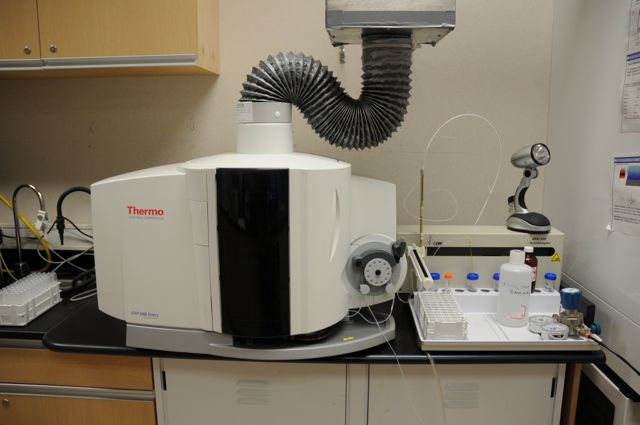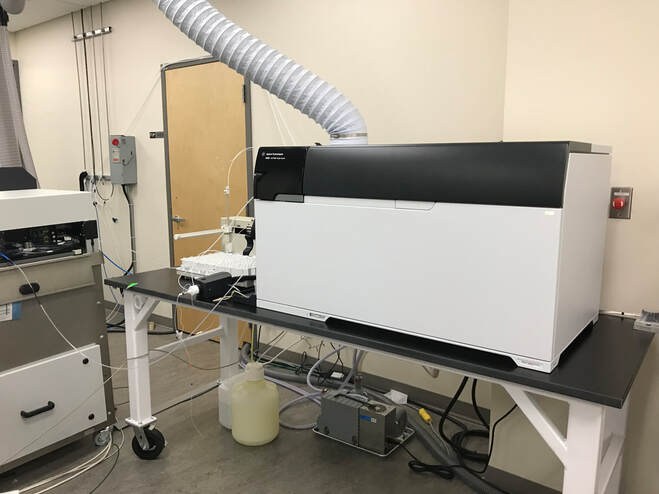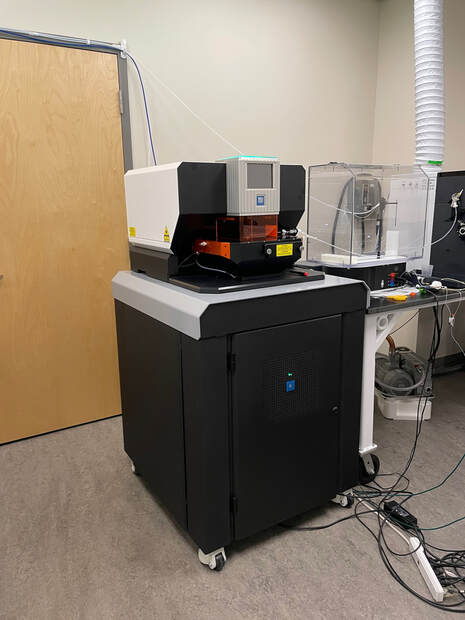ICP Spectrometry instrumentation is housed in a purpose built laboratory within the Charles E Fipke center for Innovative Research - The first laboratory building in Canada to achieve a five Green Globe rating for sustainability via the utilization of Geo-exchange technology for heating and cooling, An environmentally sustainable design that meets LEED Platinum standards.
ThermoFisher iCAP 6000 ICP-AES – is used for trace element analysis of aqueous samples in the ppb to ppm concentration range. Equipped with an CETAC ASX520 autosampler. Robust and capable of high sample throughput.
Agilent 8900 Triple Quadrupole ICP-MS
This new 2nd generation 8900 ICP-QQQ offers a range of configurations to cover applications from routine analysis to advanced research and high performance materials analysis. Some advantages of the QQQ system include:
This new 2nd generation 8900 ICP-QQQ offers a range of configurations to cover applications from routine analysis to advanced research and high performance materials analysis. Some advantages of the QQQ system include:
- Controlled reaction chemistry for consistent, reliable results
- Resolution of isobaric overlaps, beyond capability of high-resolution ICP-MS
- Lowest detection limits, even for previously difficult elements such as S, Si, P
- 4-channel cell gas control
- Unique precursor/product ion scan modes clarify reaction processes
- Monitor lower levels of ultra-trace contaminants in bulk chemicals and wafer processing baths
- Characterize nanoparticles in complex environmental, food and biological samples, even at the sub-50 nanometer scale
- Measure selenium, arsenic and arsenic speciation with better accuracy at lower levels
ESL 193 Excimer laser – is used for laser ablation sample introduction to the Agilent 8900 ICP-MS. This new laser was installed in 2021 and is equipped with a TwoVol3 sample chamber that is switchable between analytical and imaging modes. The XY stage offers fast travel and 10nm accuracy for reliable spot return over long runs. Some features of the laser include:
- Wavelength: 193 nm
- Repetition Rate: 1–500Hz
- Fluence: up to 15 J/cm2 at the sample surface
- Spot Sizes: 1–250 microns in 1 micron increments and optional rotating rectangular craters
- XY Stage: 100 mm x 100 mm with sample drawers to accommodate a wide range of samples




